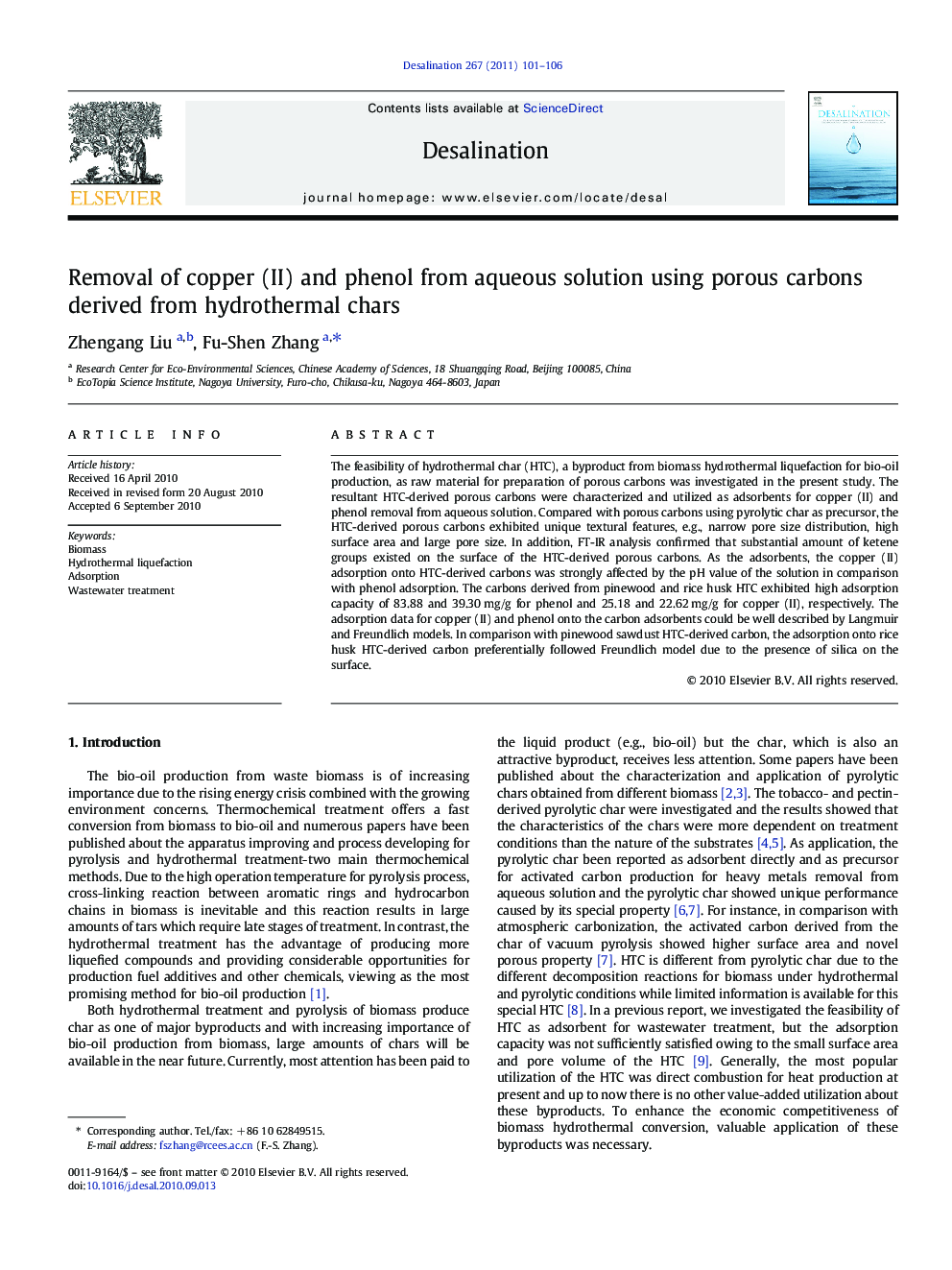| Article ID | Journal | Published Year | Pages | File Type |
|---|---|---|---|---|
| 625449 | Desalination | 2011 | 6 Pages |
The feasibility of hydrothermal char (HTC), a byproduct from biomass hydrothermal liquefaction for bio-oil production, as raw material for preparation of porous carbons was investigated in the present study. The resultant HTC-derived porous carbons were characterized and utilized as adsorbents for copper (II) and phenol removal from aqueous solution. Compared with porous carbons using pyrolytic char as precursor, the HTC-derived porous carbons exhibited unique textural features, e.g., narrow pore size distribution, high surface area and large pore size. In addition, FT-IR analysis confirmed that substantial amount of ketene groups existed on the surface of the HTC-derived porous carbons. As the adsorbents, the copper (II) adsorption onto HTC-derived carbons was strongly affected by the pH value of the solution in comparison with phenol adsorption. The carbons derived from pinewood and rice husk HTC exhibited high adsorption capacity of 83.88 and 39.30 mg/g for phenol and 25.18 and 22.62 mg/g for copper (II), respectively. The adsorption data for copper (II) and phenol onto the carbon adsorbents could be well described by Langmuir and Freundlich models. In comparison with pinewood sawdust HTC-derived carbon, the adsorption onto rice husk HTC-derived carbon preferentially followed Freundlich model due to the presence of silica on the surface.
